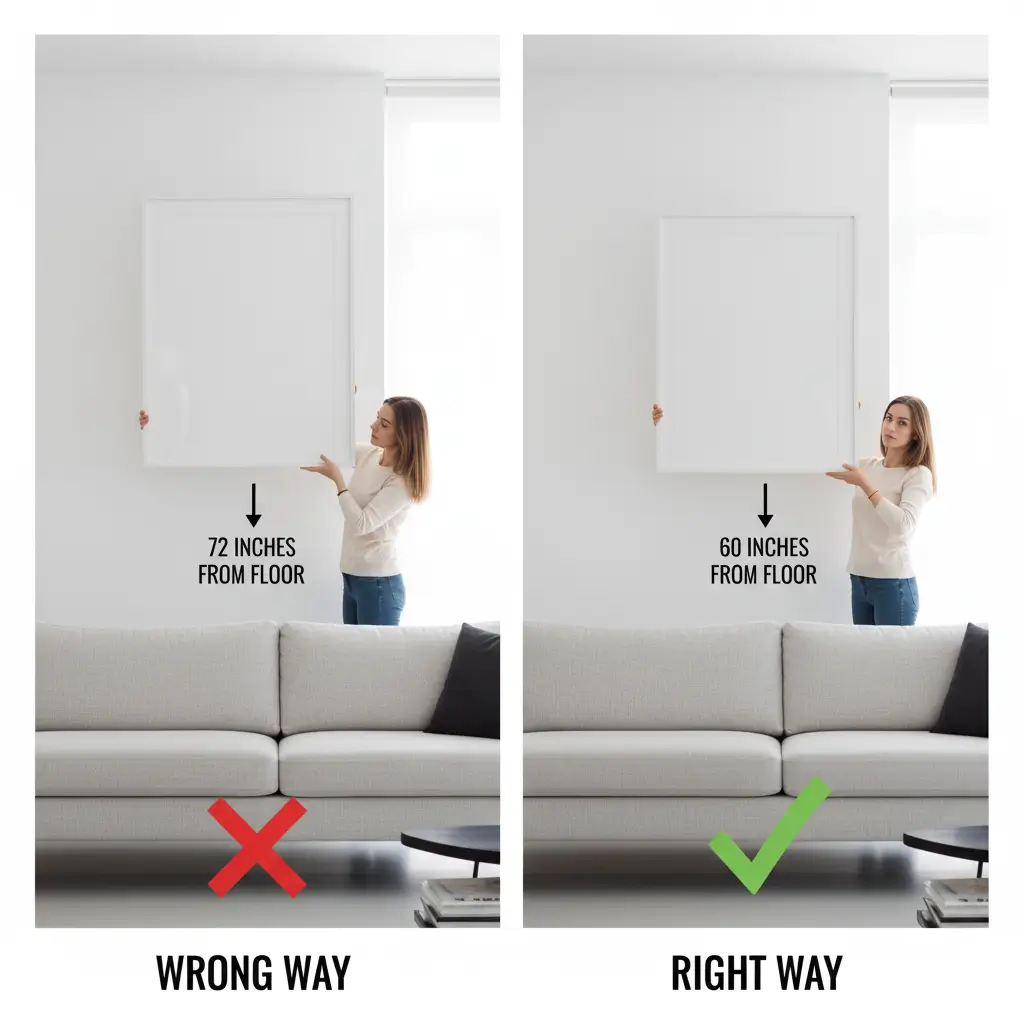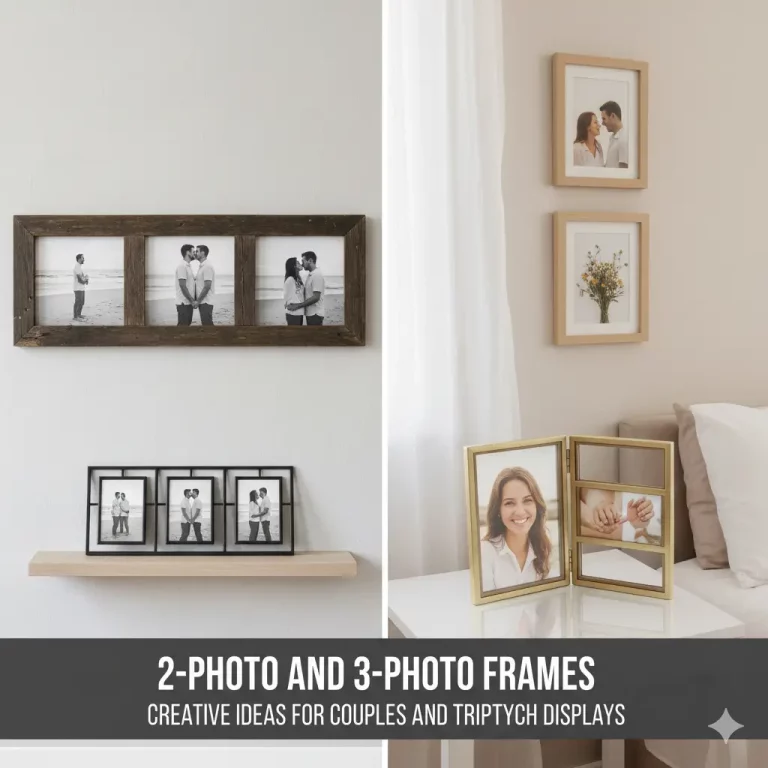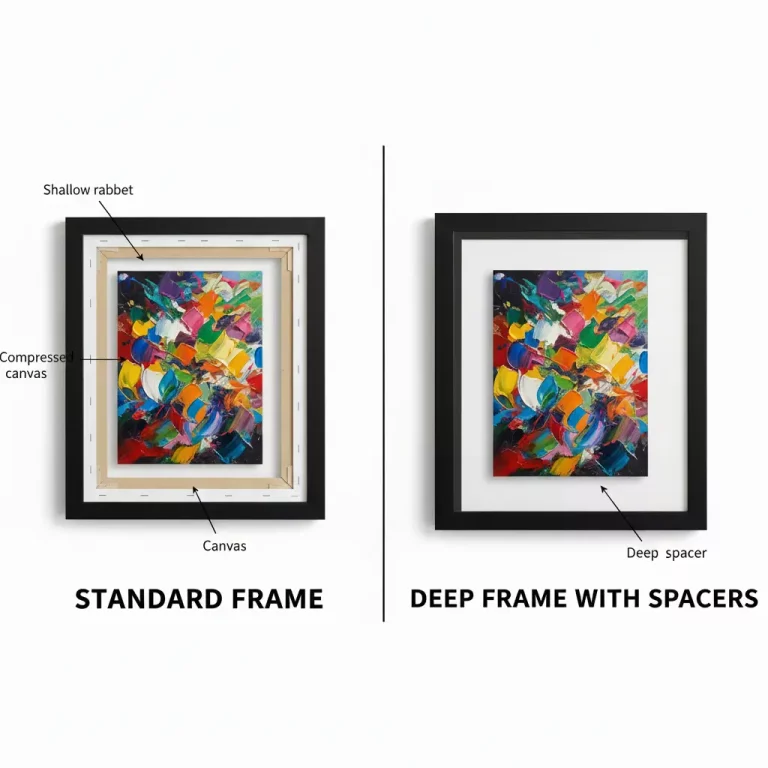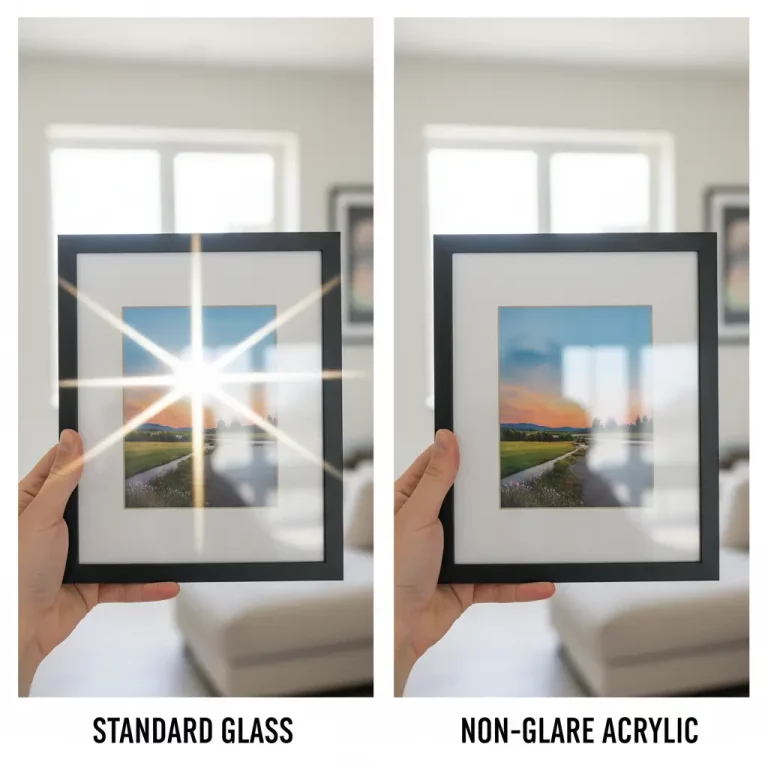Hanging a picture frame may seem simple, but getting the placement right can make all the difference in how a room feels. A frame that’s too high or too low can disrupt a room’s flow, but when frames are placed thoughtfully, your space instantly gains a cohesive, polished look.
The key to a gallery-worthy arrangement isn’t expensive artwork—it’s understanding the principles of placement, starting with the “eye-level” rule. In this guide, you’ll learn professional hanging frame tips, how to apply the 57-inch center standard, and how to adjust your approach for various rooms, gallery walls, and different frame types. By following these best practices, your favorite photos and art will be displayed to their greatest effect.
The Golden Rule: The 57-Inch Center Standard
As a best practice, position the center of your artwork at eye level. In most homes, as in top art galleries and museums, this means placing the center of the piece 57 inches from the floor. This measurement reflects the average adult eye level and provides a comfortable, consistent viewing experience.
By aligning the center of your frame at 57 inches high, visitors can enjoy your art without craning their necks or looking down. One of the most frequent framing mistakes is hanging art too high—following this rule ensures your wall decor feels intentional and professionally styled.
How to Measure the 57-Inch Mark
With a tape measure, a pencil, and these steps, anyone can achieve perfect placement:
- Measure Your Frame’s Height: Lay the frame face down to find its total height.
- Find the Center: Divide the frame’s height by two.
- Account for the Hanging Hardware: Measure from the top of the frame to the hanging wire (pulled taut) or to the hook/sawtooth.
- Calculate the Placement: Subtract the hardware measurement (step 3) from the center mark (step 2). Add this difference to 57 inches—the result is where your nail or wall hook goes.
Example Calculation:
- Frame Height: 30 inches
- Center: 15 inches (30 ÷ 2)
- Hanging Wire Distance: 4 inches from the top
- 15 (center) – 4 (wire distance) = 11
- 57 + 11 = 68 inches from the floor
Place your hook at 68 inches to align the center of the frame with 57 inches.
Customizing the Rules for Your Space
The 57-inch rule is a proven starting point, but great interiors are made by tailoring these basics to your furniture and room layout.
Hanging Frames Above Furniture
- Proximity: Hang frames 6 to 10 inches above sofas, consoles, or headboards to visually connect art with furnishings and avoid an overcrowded look.
- Scale: The width of your artwork (or gallery arrangement) should be about two-thirds the width of the furniture below it. For more advice on choosing the right frame for each room, see our Design Guide for Beautiful Frames: Tips and Tricks.
Adjusting for Room Type and Ceiling Height
- Living Rooms & Entryways: 57 inches is ideal when most time is spent standing.
- Dining Rooms & Offices: Since people are seated, lower the art’s center to around 48–54 inches, or test placement while seated for optimal comfort.
- Tall Ceilings: For ceilings above 9 feet, adjust the center point up slightly (to around 60 inches) so art fills the vertical space.
Gallery Walls: Creating Impact with Multiple Frames
Gallery walls offer dynamic ways to display collections, but are easiest to design when you treat the group as a single piece.
- Find a Central Point: Imagine the entire gallery wall as one large frame and center it at 57 inches.
- Layout Planning: Arrange frames on the floor first until you find a balanced look; start with a statement piece and work outward.
- Paper Templates: Cut templates of each frame and tape them to the wall to preview the arrangement and refine spacing.
- Consistent Spacing: Keep spacing between frames uniform—typically 2 to 4 inches—for a clean, organized look. If you’re working with a tight area, explore our 12 Inspiring DIY Photo Wall Ideas for small space solutions.
To further maximize compact wall areas, check out 30 Aesthetic Wall Art Ideas to Transform Your Space.
Pro Tips for Hanging Frames Like a Pro
Perfect placement is about more than measuring. These simple strategies ensure your frames look flawless and your walls feel cohesive:
- Use Two Hooks for Large Frames: Dual hooks keep heavy or wide frames level and secure.
- Level Tools Are Essential: A bubble level is a must-have for straight displays.
- Mistakes Happen—It’s Easy to Fix: Don’t worry about making a small nail hole; you can always patch, paint, and adjust as needed.
- Choose the Right Frame Style: The frame you select influences your overall décor. Stay current with the Top 10 Wall Print Design Trends to watch for inspiration.
By mastering the 57-inch rule and knowing when to adapt it, you can confidently display art and photos that unify your decor. Take the time to measure and plan, and you’ll enjoy walls that feel styled by a professional—every day.





